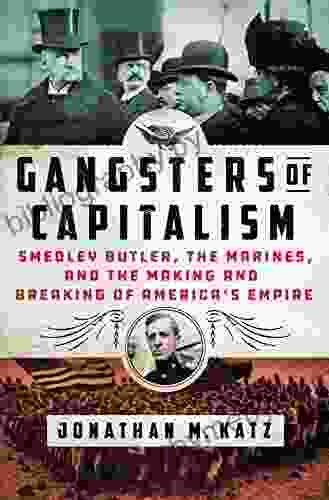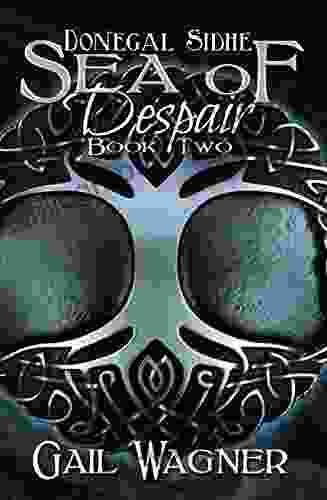Why Did the Allies Win the Second World War?

The Second World War, a colossal conflict that engulfed the globe from 1939 to 1945, stands as one of the most pivotal events in human history. On one side stood the Axis powers, led by Nazi Germany, Fascist Italy, and Imperial Japan. On the other, the Allies, a formidable coalition of nations including the United Kingdom, the United States, the Soviet Union, China, and many others.
4.3 out of 5
| Language | : | English |
| File size | : | 110 KB |
| Text-to-Speech | : | Enabled |
| Screen Reader | : | Supported |
| Enhanced typesetting | : | Enabled |
| Word Wise | : | Enabled |
| Print length | : | 17 pages |
| Lending | : | Enabled |
As the dust settled on the battlefields, the Allies emerged victorious. But what factors contributed to their triumph over the seemingly formidable Axis powers? This article will delve into the multifaceted reasons that shaped the outcome of the Second World War, exploring the complexities of military strategy, economic strength, technological advancements, leadership, and diplomacy.
Military Strategy: Adapting to the Evolving Landscape of War
The Second World War witnessed a profound evolution in military tactics and strategies. The Allies, particularly the United States and the Soviet Union, demonstrated a remarkable ability to adapt to the changing demands of the battlefield.
The United States employed a strategy of "island hopping" in the Pacific theater, bypassing heavily fortified Japanese positions and capturing key strategic islands instead. This approach allowed the Allies to advance steadily towards Japan while minimizing casualties.
On the Eastern Front, the Soviet Union implemented the "deep battle" doctrine, emphasizing the use of combined arms and relentless offensive operations. This strategy proved highly effective against the German Wehrmacht, forcing the Axis forces into a series of costly withdrawals.
Economic Strength: Mobilizing the Industrial Might
The Allies possessed a significant advantage in terms of economic strength. The United States, in particular, emerged as the "arsenal of democracy," supplying its allies with the necessary equipment and resources to wage war.
The American economy, buoyed by a robust industrial base and vast natural resources, churned out an unprecedented volume of war materiel. From airplanes to tanks, ships to munitions, the United States provided the Allies with a steady stream of vital supplies.
The Soviet Union, despite its initial setbacks, also demonstrated remarkable economic resilience. The country's vast pool of manpower and natural resources enabled it to mobilize its industry on a massive scale, producing a formidable arsenal of weapons and equipment.
Technological Advancements: Harnessing the Power of Innovation
Technological advancements played a crucial role in the Allied victory. The development of radar, for example, gave the Allies a significant edge in detecting and tracking enemy aircraft and ships. This technological advantage proved invaluable in the Battle of Britain and in the naval campaigns in the Atlantic and Pacific.
The Allies also made significant strides in codebreaking, most notably with the breaking of the German Enigma cipher. This breakthrough gave the Allies access to vital enemy communications, enabling them to anticipate Axis plans and react accordingly.
The development of the atomic bomb by the United States, though controversial, ultimately hastened the end of the war by demonstrating the Allies' overwhelming technological superiority.
Leadership: Inspiring and Guiding the Allied Forces
The leadership of the Allied nations played an indispensable role in the ultimate victory. Winston Churchill, Franklin D. Roosevelt, and Joseph Stalin emerged as iconic figures who galvanized their countries and forged strong alliances.
Churchill's unwavering determination and inspiring speeches rallied the British people during their darkest hours. Roosevelt's "Four Freedoms" speech laid out a compelling vision for a postwar world based on democracy and human rights. Stalin's ruthless efficiency and unwavering resolve helped steer the Soviet Union through the horrors of war.
These leaders, along with many other military and civilian leaders, provided the vision, inspiration, and strategic guidance that enabled the Allied forces to overcome adversity and achieve victory.
Diplomacy: Forging Alliances and Building Consensus
Diplomacy was another vital factor in the Allied victory. The Allies successfully forged a global coalition of nations, bringing together disparate countries with different political systems and interests.
The Atlantic Charter, signed by Churchill and Roosevelt in 1941, established the principles for postwar cooperation and laid the foundations for the United Nations. The Tehran Conference and the Yalta Conference further cemented the Allied alliance and set the stage for the eventual defeat of Germany and Japan.
The Allies also worked tirelessly to maintain a united front, despite occasional disagreements and setbacks. This diplomatic coordination ensured that the Allied forces remained cohesive and focused on their common goal of defeating the Axis powers.
The Triumph of Cooperation and Allied Superiority
The Allied victory in the Second World War was a testament to the combined strength and determination of nations united in a common cause. Through superior military strategy, economic might, technological innovation, inspiring leadership, and effective diplomacy, the Allies overcame the formidable challenges posed by the Axis powers.
The lessons learned from the Second World War remain relevant today, highlighting the importance of international cooperation, collective security, and the unwavering pursuit of freedom and democracy. By understanding the factors that led to the Allied triumph, we can better appreciate the sacrifices made and the values that have shaped our world.
4.3 out of 5
| Language | : | English |
| File size | : | 110 KB |
| Text-to-Speech | : | Enabled |
| Screen Reader | : | Supported |
| Enhanced typesetting | : | Enabled |
| Word Wise | : | Enabled |
| Print length | : | 17 pages |
| Lending | : | Enabled |
Do you want to contribute by writing guest posts on this blog?
Please contact us and send us a resume of previous articles that you have written.
 Book
Book Novel
Novel Page
Page Chapter
Chapter Text
Text Story
Story Genre
Genre Reader
Reader Library
Library Paperback
Paperback E-book
E-book Magazine
Magazine Newspaper
Newspaper Paragraph
Paragraph Sentence
Sentence Bookmark
Bookmark Shelf
Shelf Glossary
Glossary Bibliography
Bibliography Foreword
Foreword Preface
Preface Synopsis
Synopsis Annotation
Annotation Footnote
Footnote Manuscript
Manuscript Scroll
Scroll Codex
Codex Tome
Tome Bestseller
Bestseller Classics
Classics Library card
Library card Narrative
Narrative Biography
Biography Autobiography
Autobiography Memoir
Memoir Reference
Reference Encyclopedia
Encyclopedia Galia Sabbag
Galia Sabbag Lucas Whitecotton
Lucas Whitecotton Kristie Lorette
Kristie Lorette Misty Jordyn
Misty Jordyn Gail E Haley
Gail E Haley Sue Fierston
Sue Fierston Larry Jacobson
Larry Jacobson Gianna Sobol
Gianna Sobol Pam Coburn
Pam Coburn Gary Ferguson
Gary Ferguson Geoffrey Hilsabeck
Geoffrey Hilsabeck Gail Craswell
Gail Craswell Margaret Winslow
Margaret Winslow Gary Player
Gary Player Gay Robins
Gay Robins George Cartwright
George Cartwright George G Morgan
George G Morgan Gene Wolfe
Gene Wolfe George Eccleston
George Eccleston George C Fraser
George C Fraser
Light bulbAdvertise smarter! Our strategic ad space ensures maximum exposure. Reserve your spot today!

 Allen GinsbergThe Llove Llama Travels the Continents: A Heartwarming Adventure for Readers...
Allen GinsbergThe Llove Llama Travels the Continents: A Heartwarming Adventure for Readers...
 William ShakespeareArab Kingdom Catholic College Jewish Teacher: A Journey of Intercultural...
William ShakespeareArab Kingdom Catholic College Jewish Teacher: A Journey of Intercultural... Cristian CoxFollow ·7k
Cristian CoxFollow ·7k Gene SimmonsFollow ·4k
Gene SimmonsFollow ·4k Harvey HughesFollow ·2.9k
Harvey HughesFollow ·2.9k Guillermo BlairFollow ·2.8k
Guillermo BlairFollow ·2.8k Boris PasternakFollow ·15.5k
Boris PasternakFollow ·15.5k Jean BlairFollow ·3.9k
Jean BlairFollow ·3.9k Ronald SimmonsFollow ·4.7k
Ronald SimmonsFollow ·4.7k Gil TurnerFollow ·19.6k
Gil TurnerFollow ·19.6k

 Brian West
Brian WestSmedley Butler: The Marines and the Making and Breaking...
: A Marine's...

 Gabriel Garcia Marquez
Gabriel Garcia MarquezIschia, Capri, Sorrento, Positano, And Amalfi: An...
Explore the...

 Felix Carter
Felix CarterAdorn Your Little Princess with Fleur Ange's Exquisite...
Welcome to the enchanting...

 Kelly Blair
Kelly BlairUnveiling the Secrets of the Historical Way and Fishermen...
Step into the pages...

 Angelo Ward
Angelo WardKnit the Cutest Thumbless Mittens for Your Little One:...
Prepare to be...
4.3 out of 5
| Language | : | English |
| File size | : | 110 KB |
| Text-to-Speech | : | Enabled |
| Screen Reader | : | Supported |
| Enhanced typesetting | : | Enabled |
| Word Wise | : | Enabled |
| Print length | : | 17 pages |
| Lending | : | Enabled |










